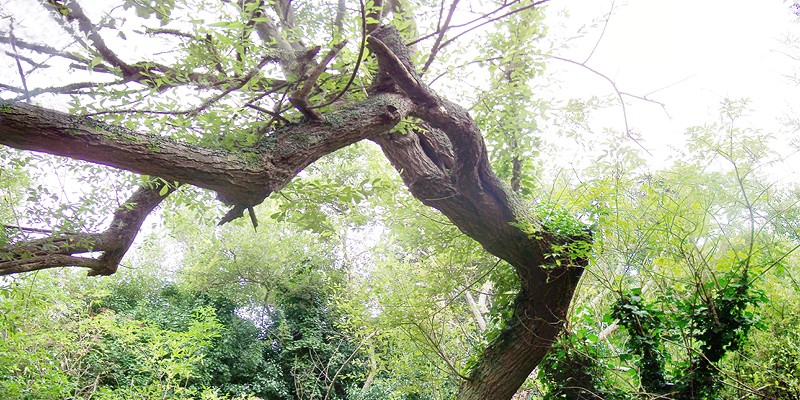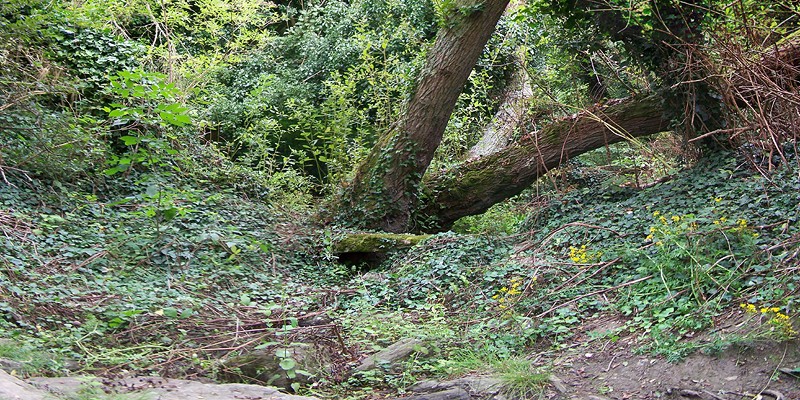 [Summary] [Summary] |
From Storang creek to Saint-Nicolas. |
 |
 |
 Dans le ravin du Storang. Les fonds, en Bretagne et sur cette île en particulier, sont souvent très encombrés, avec un aspect sauvage et hirsute des plus romantiques. La végétation, très dense, filtre le vent. On y est à l'abri. Dans le ravin du Storang. Les fonds, en Bretagne et sur cette île en particulier, sont souvent très encombrés, avec un aspect sauvage et hirsute des plus romantiques. La végétation, très dense, filtre le vent. On y est à l'abri.
 In the Storang ravine. The brooks, in Brittany and on this island in particular, often are very cluttered, with a wild and hirsute aspect very romantic. The dense vegetation filters the wind. One is under cover. |
 |
 Storang beach, and the dark rocky shores of Locqueltas (Loc = locus, queltas = Gildas. It means St. Gildas place). Storang beach, and the dark rocky shores of Locqueltas (Loc = locus, queltas = Gildas. It means St. Gildas place). |
 |
 Young plants of Fucus spiralis (Linnæus 1753) Fucaceæ, on upper intertidal rocks, Storang beach. Young plants of Fucus spiralis (Linnæus 1753) Fucaceæ, on upper intertidal rocks, Storang beach. |
 |
 Idothea baltica Idothea baltica (Pallas, 1772). Intertidal to 30m deep (M. Poulicek p. c.)
; it has been shown this species hides in Fucus and grazes on Pilayella littoralis (src: H. Orav-Kotta & J. Kotta:
Food and habitat choice of the isopod Idotea baltica in the northeastern Baltic Sea). Also detritivorous and necrophagous. Color
varies from green to yellow, to brown. Pattern can be marbled, dotted, reduced to an axial line, or nothing. Females ca. 2cm long. Epithet balthica seems incorrect. |
 |
 Sitkana-like Periwinkles of the arcana-compressa-rudis-saxatilis complex, on rocks exposed to waves. Ø circa 5mm. Sitkana-like Periwinkles of the arcana-compressa-rudis-saxatilis complex, on rocks exposed to waves. Ø circa 5mm. |
 |
 Upper intertidal shell grit on Storang Beach. Rissoa guerinii (Récluz 1843), Tectura virginea (O.F. Müller 1776), Helcion pellucidus (Linnæus 1758), Tricolia pullus (Linnæus 1758), Nassarius incrassatus (Ström 1768) etc. Max size = 5mm. |
 |
 Cape Saint-Nicolas, seen from the Enfer. The salted winds peel this part of the coast up to 300-400m inland. Cape Saint-Nicolas, seen from the Enfer. The salted winds peel this part of the coast up to 300-400m inland. |
 |
 Crossing the eastern ravine of Saint-Nicolas. Crossing the eastern ravine of Saint-Nicolas. |
 |
 The western inlet of Port Saint-Nicolas. The western inlet of Port Saint-Nicolas. |
 [next: from Kerlard to Quentrec'h cliffs] [next: from Kerlard to Quentrec'h cliffs] |



















